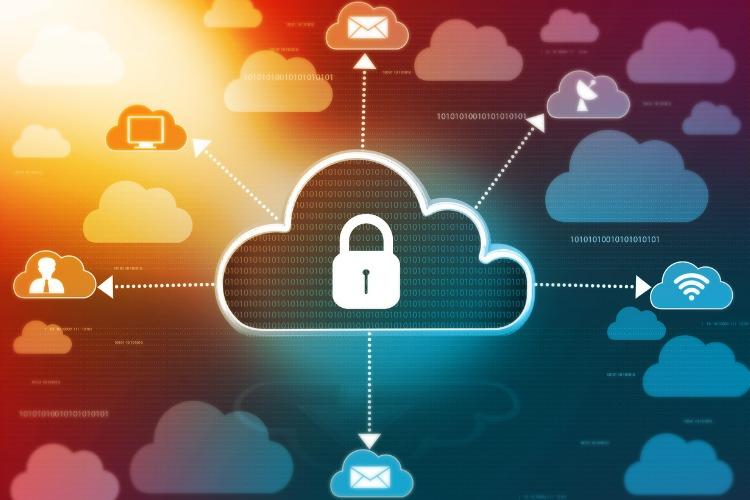How Cloud-Based Security Is Becoming The Future Of Cyber And Physical Security
A survey by HID Global in 2019 revealed that around 54% of businesses intended to switch to cloud-based access control by 2022.
Why is cloud-based technology becoming increasingly popular? And which are the best cloud-based tools and technologies for cyber and physical security?
Keep reading as we discuss the key benefits of cloud-based security that improve how businesses approach cyber and physical security.
Over-The-Air Software Updates
When you opt for a cloud-based security system over an on-premise system, you gain the advantage of having over-the-air software updates and troubleshooting.
With an on-premise security system, you must allocate plenty of space for servers and complex wiring systems. You must maintain these systems carefully throughout their lifetime. It can be time-consuming for your administrative staff to call service engineers and accompany them throughout the building when they arrive.
With a cloud-based security system, there is no such inconvenience. Instead, if you notice an issue with your system or a software update must be performed, you don’t need to call a service engineer. Instead, your service engineer will make you aware of the update and perform it remotely over the air, so you don’t need to schedule an engineer visit.
A great example of a successful over-the-air update would be the wave-to-unlock feature for cloud-based commercial keyless locks. At the beginning of the pandemic, businesses needed a more hygienic way for employees and visitors to enter the building. However, service engineers could not visit in person due to lockdown measures.
Cloud-based security allowed them to install an update over the air, allowing employees and visitors to unlock doors by waving their hands over the reader, triggering remote communication with their mobile devices. They don’t need to touch anything - reducing the spread of germs at the building’s entrance.
Integrating All Your Cloud-Based Tools Under One Platform
When using an on-premise system, you risk creating data silos between departments, which could slow operations.
With cloud-based security, you can unify your data by hosting it under a single platform.
For instance, if your business uses communication apps to facilitate remote or hybrid work, you can integrate slack, G-suite, Zoom, Hubspot, and any other communication platform to create a single source of truth for communications. You can also combine these platforms with cybersecurity software that will protect your sensitive communications data.
Remote & Mobile-First Management Of Security
One of the most attractive features of cloud-based security is that it enables remote management of security tools. Businesses and institutions are adopting cloud-based security at an alarming rate due to its convenience and rapidity for security operations.
Below, you’ll find some of the most important and widespread applications of remote and mobile-first security management.
- Visitor management systems - the visitor management process can be automated in a cloud-based visitor management integration with your access control system, improving the reliability of visitor data while reducing time-consuming manual processes. Visitors who need to enter the building should fill out a digital registration form granting them temporary access credentials. The access control system will record their entry and exit times and revoke their credentials upon departure.
- Alarms and gunshot detectors - Businesses need alarm systems to ensure compliance with regulations. To make alarm systems more efficient, businesses can invest in cloud-based systems that allow alerts to be sent to employees’ mobile devices based on security events.
- Lockdown systems - in response to alarm system triggers and security threats, lockdown systems allow security professionals to initiate lockdown procedures from anywhere, tackling a security event instantly.
Cloud-Based Physical Security Hardware
One of the key vulnerabilities in any access control system (whether on-premise or cloud-based) is that it does not prevent unauthorized users from stealing access credentials and using them to enter the building. One of the best ways to avoid this is to invest in a cloud-based video intercom system.
The intercom system combines video security and access control to provide identity verification at your building’s entrance. By integrating facial recognition software with the device, you can automatically verify that a person is who they claim to be and that their credentials are their own.
Integrating Cybersecurity Policies Into Physical Security Hardware
Regarding physical security, it’s important to remember that you cannot imply the trust of every visitor, interviewee, and employee entering your building daily.
For this reason, it becomes essential to integrate cybersecurity policies into your physical security hardware. Zero-trust is a cybersecurity policy that does not assume the trustworthiness of every user on the network. Instead, it grants users role-based permissions, ensuring that only a limited amount of information will become available if their account becomes compromised in a cyberattack.
The same goes for physical security. By implementing zero-trust in your physical security strategy, you can restrict areas housing sensitive assets and ensure that visitors and employees only gain access to the places they need to carry out daily operations.
Summary
If you’re looking to improve physical and cybersecurity, you must observe emerging security trends. Many businesses and institutions are implementing cloud-based security to unify cyber and physical security, strengthening their approach to security. Consider the tools and technologies listed in this post and whether cloud-based technologies could minimize gaps in your security strategy.

